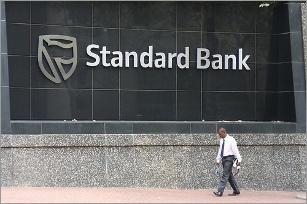Developing innovative solutions is the key when lending to small holder farmers and small to medium sized businesses in Africa’s agricultural sector
The success of the green revolutions in South East Asia and India clearly shows that from a growth point of view opportunities exist in Africa’s agricultural sector. The large share of agriculture in Africa’s GDP suggests that strong growth in agriculture is necessary for overall economic growth - growing agriculture meaning growing economies across the whole continent. Small farmers in Africa will be playing a key role in feeding the world over the next decade or two.
The cost of producing food in first world countries is extremely high and land is scarce. On the other hand, sub–Saharan Africa has enormous natural, physical and human potential. The continent uses less than 25 per cent of the arable land and less than 14 per cent of the irrigation potential. Globally the demand for food is rising 3.3 per cent per annum whilst the supply of land increases by one per cent per annum. With agricultural land in developed countries shrinking as urbanisation expands, food production will be seen to be the critical resource which Africa can supply to the world.
However, the ability of Africa to supply the world’s food requirements can only occur if interventions are made at numerous levels from the provision of finance to infrastructure development to effective market linkages. For example, Africa’s use of fertiliser is only two per cent of the world average and as a result cereal yields in Sub-Saharan Africa are only 1.3t/ha compared to 3.5t/ha in Europe and 5.5t/ha in North America. Raising yields requires a combination of education through extension services, access to appropriate and timely inputs as well as access to finance to purchase inputs.
The focus of the donor community has shifted away from food aid and is now focused on developing small farmers and establishing food security. The stage is being set for food production in Africa to gain momentum. Africa’s small farmers are unique in that they generally have access to land that is free (communally held) or can be used at a relatively low cost. This free/low cost land provides farmers with a significantly lower cost structure. In addition small farmers have the critical mass required to establish processing or other facilities to support their activities. One of the challenges in financing this sector is to ensure increased efficiencies are realised at every step.
A lack of usable collateral makes traditional lending products inappropriate and thus Standard Bank’s lending model uses an innovative funding structure that includes partnering with key players in the agriculture value chain, high profile foundations and NGO’s who assist with operational management. The provision of finance is important, but it is only one of constraints facing small holder agriculture in Africa. Equally important is the provision of a system through which small farmers can improve efficiencies in all areas; from accessing inputs, improving yields, market linkages, infrastructure development and skills transfer.
Starting a green revolution
The partnership between Standard Bank, the Alliance for a Green Revolution in Africa (AGRA), OPEC Fund for International Development (OFID), Kilimo Trust, Millennium Challenge Account (MCA) and Millennium Development Authority (MiDA) that is operating in Ghana, Uganda, Tanzania and Mozambique is an example of this type of system. The lending structure makes use of a co-operative mechanism that includes linkages to formal markets that provide minimum price guarantees (thus mitigating price risk), includes weather index insurance (to mitigate climate risk) as well as training and mentorship. The co-operative structure allows farmers to consolidate their bargaining power which reduces input costs and contributes to economies of scale in terms of output and market access.
Clear opportunities are visible beyond the financing of small farmers. As small farmer output increases the Bank will be afforded the insight and access into secondary agriculture (millers, processors, etc.) Ultimately Standard Bank believes that opportunity exists to provide an end-to-end banking solution for agriculture in Africa where the Bank can leverage and cross-sell a full suite of products and services, from traditional commercial banking and lending products to crop and weather insurance products.
The challenge of financing Africa’s small farmers is about more than just the provision of finance; it is about providing a complete solution to small holder farmers to ensure long term sustainability, food security and higher standards of living across the continent.




